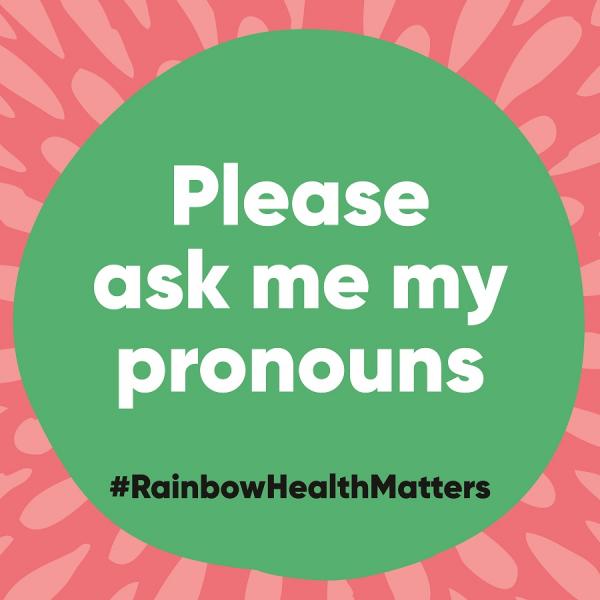Getting Pronouns Right - #RainbowHealthMatters
Pronouns are what you use to identify yourself and others. They can often imply someone’s gender, which is why those who are non-binary use the neutral pronouns they/them/theirs.
Using the right names and pronouns is important for everyone, but especially trans and gender diverse people. The Getting Pronouns Right awareness campaign is about fostering a culture of respect where everyone can feel comfortable to share their pronouns and ask others; and feel confident and fluent using different pronouns, including singular they/them pronouns.
Don’t assume someone's pronoun: ask and share your pronoun. If the person you've asked doesn't understand, ask them how you can refer to them – he/him/his, she/her/hers, they/them/theirs.
Pronoun cueing is the action of correcting someone who has misgendered a colleague or client in an indirect way. For example:
Sam: “Have you seen Fadi?”
Billy: “No I haven’t seen him”
Sam: “If you do, please let them know I’m looking for them.”
Pronoun Guides
There are many excellent guides to help. Click the links to read online pronouns guides from Minus 18, National LGBTI Health Alliance, La Trobe University, Victorian Public Service, Pride In Health & Wellbeing, Victorian Aboriginal Child Care Agency, and ACON
The letter X
The letter ‘x’ has the ability to broaden terms used to describe people. As gender and identities are expanding, the letter ‘x’ is being used more to include the broader community.
“Folks” and “folx” are common terms that are used collectively to refer to a group of people. Both are inclusive, however, some people prefer the term be used with an ‘x’ which is specifically inclusive of the LGBTIQA+ community.
Some people who identify as female, use the term “womxn” to self-identify. This stems from the historical masculinity of the term “man” which some people choose to avoid. The ‘x’ enables flexibility in the term.

